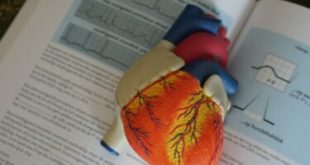When I meet a woman diagnosed with breast cancer, the first thing I notice is not fear, but her determination. Beneath the disbelief, fear, and anger that follow later lies quiet resilience. That strength becomes evident when we start discussing treatment options, particularly a mastectomy — the surgical removal of one or both breasts, either to treat or prevent breast cancer.
For most women, a mastectomy is more than just a procedure. It represents survival, and also a profound personal loss. The breast, long associated with femininity, motherhood, and identity, holds an emotional significance that medicine cannot measure. When a woman agrees to part with it to save her life, she is making one of the bravest decisions imaginable.
The Emotional Landscape of Healing
The journey after mastectomy is highly complex — involving the mind and the body. Many women I’ve treated describe the first time they look at themselves in the mirror after surgery as one of the hardest moments of their recovery. While the physical scar is visible, the emotional one often is not.
Women may face withdrawal from daily activities, avoiding social interactions, or declining invitations to family gatherings. They may fear judgment, feel self-conscious, or worry about how others — children, spouses, friends, colleagues — perceive their changed bodies. This self-consciousness can amplify feelings of isolation and anxiety.
One of the most profound challenges is intimacy. Cancer itself can disrupt relationships; but breast cancer and mastectomy often affect intimacy on an entirely different level. Women may feel disconnected from their partner or fearful of sexual rejection, and partners may struggle to understand the emotional and physical adjustments required.
Counselling, therefore, must extend beyond the patient. Involving spouses and close family members in therapy or support sessions is crucial. When couples communicate openly, with guidance from professionals, intimacy can gradually be rebuilt, and partners can become active allies in the healing process. Support groups for families also help loved ones understand the realities of recovery, fostering a compassionate environment at home.
The Physical Recovery: Moving Forward, One Step at a Time
Physical recovery after a mastectomy requires patience. Some women experience stiffness, numbness, or swelling in the arm due to lymphoedema. Simple physiotherapy routines, arm elevation, and gentle stretching exercises can help restore strength and flexibility.
Lifestyle, too, becomes part of the healing process. A balanced diet, moderate exercise, adequate sleep, and regular follow-ups with the oncology team are essential not only for recovery but for preventing recurrence. It’s also a time to reflect on long-term wellness — to eat consciously, manage stress, and cultivate habits that nurture both physical and emotional health.
Practical Tips for Life After Mastectomy
1. Reconnecting Socially
Start small: Attend close family gatherings before larger social events.
Bring a trusted friend or family member for support in public spaces.
Give yourself permission to decline invitations until you feel ready — there’s no timeline for comfort.
2. Navigating Intimacy
Open communication with your partner is key. Share fears, needs, and feelings.
Consider couple counselling to rebuild emotional and physical closeness.
Take small steps to re-ignite intimacy with touch, conversation, or non-sexual affection before moving to sexual activity.
3. Family Involvement
Educate family members about the physical and emotional aspects of recovery.
Encourage loved ones to attend counselling or support group sessions with you.
Empathy and patience from family members significantly boost emotional recovery.
4. Self-Compassion and Body Acceptance
Practice self-care routines with gentle exercises, skincare, and mindful activities.
Mirror exercises or journalling can help rebuild confidence.
Reframe your “normal” as life after mastectomy is a new chapter.
5. Professional Support
Physiotherapy, nutrition counselling, and mental health support are integral parts of recovery.
Survivor networks can provide inspiration, guidance, and a sense of belonging.
Reconstructing Confidence, Redefining Normal
Advances in reconstructive surgery have transformed what life after mastectomy can look like. Women can now choose from several options, from silicone implants to autologous reconstruction using their own tissue, allowing for a more natural look and feel. These procedures can be performed immediately during the mastectomy or at a later stage, depending on the treatment plan and patient preference.
But reconstruction isn’t the only path to healing. Many women choose to “go flat,” opting not to reconstruct; and that is equally empowering. This choice, when made freely and without societal pressure, reflects a powerful acceptance of one’s new body and identity.
A mastectomy creates a new normal and I have seen many patients rediscover themselves in extraordinary ways — through art, writing, community service, or advocacy. Some become mentors for newly diagnosed patients, others focus on simply living more intentionally.
One of my patients, a 38-year-old mother of two, once told me: “Cancer took my breast, but it gave me back my voice.” That sentence has stayed with me because it captures what many survivors come to realise — that survival is not the end of the story, but the beginning of a different, deeper one.
Cancer Awareness, Diagnosis and Support
India has taken giant strides in creating breast cancer awareness and promoting early detection. With timely diagnosis and advanced treatment options, survival rates are improving significantly. But survival alone is not enough; true healing includes emotional rehabilitation, body acceptance, and a compassionate support system that acknowledges the full weight of what women go through after a mastectomy.
At Narayana Health, we believe that treating cancer is not just about removing a tumour; it’s about helping women rediscover their strength, confidence, and sense of wholeness. Psychological support, counselling for spouses and family, and survivor networks are integral to this process. A mastectomy may change how a body looks, but it rarely diminishes the courage, grace, or spirit of the woman who lives through it.
Life after mastectomy is not one of loss, but of resilience — of women who emerge stronger, wiser, and ready to live again, on their own new terms.
By Dr. Shraddha Modi, Associate Consultant, Breast Oncology & Oncoplastic Surgery, Narayana Health City, Bangalore.
 Newspatrolling.com News cum Content Syndication Portal Online
Newspatrolling.com News cum Content Syndication Portal Online






